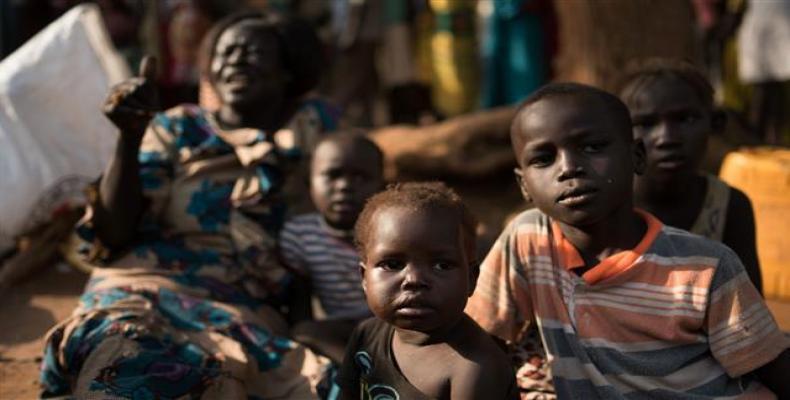United Nations, June 17 (RHC)-- A record number of almost seven million people are facing severe hunger in South Sudan, despite a peace agreement which has largely stopped fighting after more than five years of war, UN agencies have warned.
“Every year, hunger reaches new and unprecedented levels in South Sudan with millions of people unsure where their next meal will come from, particularly at this time of the year when hunger peaks from May to July,” Hsiao-Wei Lee of the World Food Program (WFP) said in Juba. UN-backed assessments use a ranking called the Integrated Food Security Phase Classification (IPC), which rates hunger levels from one to five.
The WFP, Food and Agriculture Organization (FAO) and children’s agency UNICEF said about 1.8 million people in South Sudan were in an “emergency,” or level four, which means large gaps between meals, acute malnutrition and excess deaths. Reports also reveal that more than five million others are also having to skip meals.
At the beginning of 2019, it was estimated that 6.1 million people were facing hunger. But this figure now stands at 6.9 million people – about 61 percent of the population. Under the IPC system, level five is classified as “catastrophe,” and when it applies to 20 percent of the population is deemed a famine.
South Sudan declared a “man-made” famine in 2017. While the technical requirements for a famine are not currently met, the overall number of people requiring food aid has increased by about two million.
A statement from the agencies said the annual lean season “started early following record low stocks from the poor 2018 harvest and has been further extended by the delayed onset of 2019 seasonal rains.”
Persistent economic instability, years of fighting and displacement and high food prices have all made access to food more difficult. And if the current situation continues, about 21,000 people could slide into “famine” conditions, said Pierre Vauthier, deputy country director for the FAO.
This estimate has dropped from about 30,000 in January. “With greater stability in the country, access to those in need has improved, allowing us to treat more than 100,000 children suffering from severe malnutrition in the first five months of the year, with more than 90 per cent of those children recovering,” said Mohamed Ag Ayoya, UNICEF’s representative in South Sudan.
“But malnutrition levels remain critical in many areas and our fear is that the situation could worsen in the coming months.” South Sudan descended into war in 2013 when President Salva Kiir accused his former deputy and fellow former rebel leader Riek Machar of plotting a coup.
The war, marked by ethnic violence and brutal atrocities, has left about 380,000 dead while some four million have fled their homes. Under a peace agreement signed in September, Kiir agreed to set up a unity government with Machar, who is to return from exile, but that has been delayed by six months until November.


